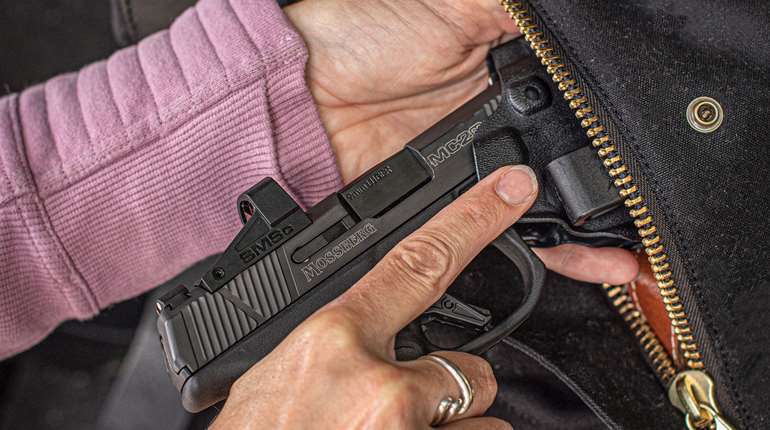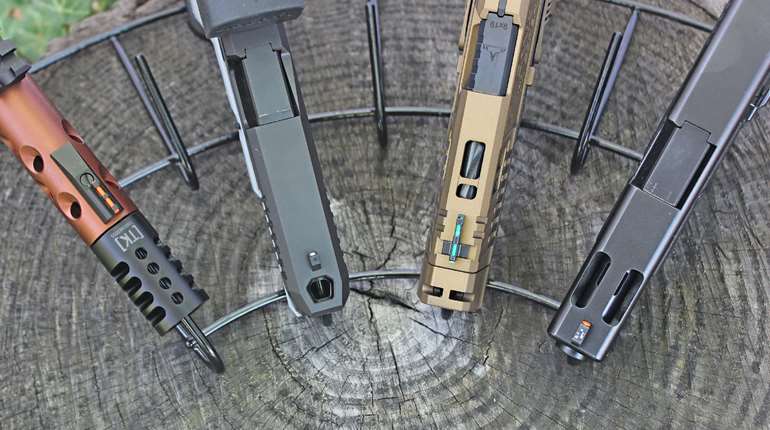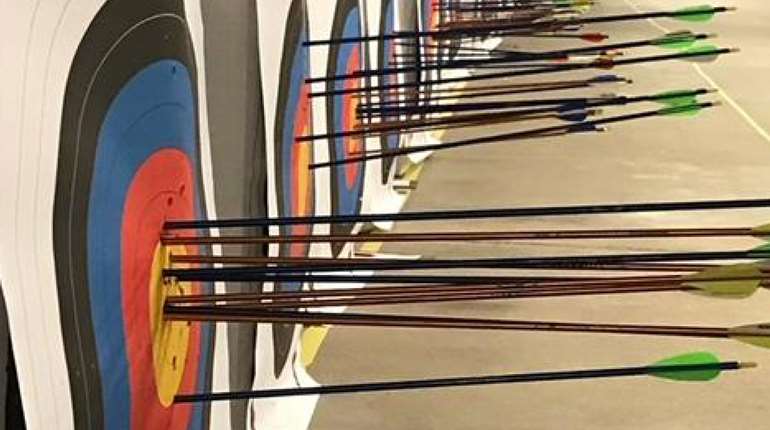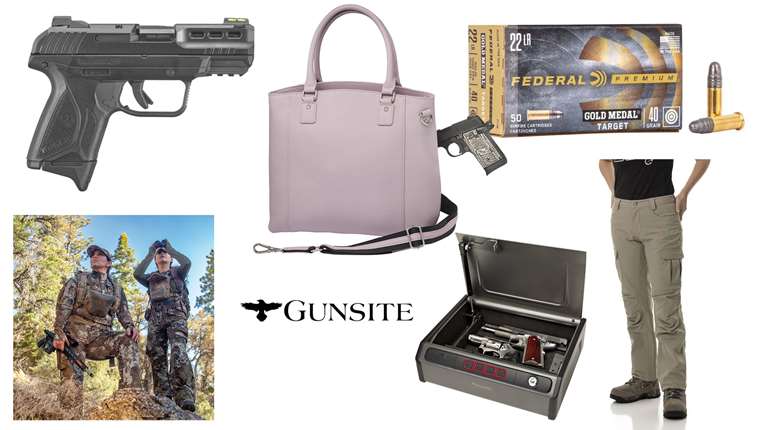
Springtime is a good time to take a few minutes to clean your concealed-carry handgun. If you’ve never tackled this task on your own, follow along with these basic steps.
Step 1
Unload and check that your gun is clear.
Whenever you handle a firearm, make sure it is empty, and follow the rules of firearm safety. Start by keeping your gun pointed in a safe direction, finger off the trigger and outside of the trigger guard. Then, for a semi-automatic, drop the magazine or, for a revolver, open the cylinder. Confirm the chamber is empty and lock back the slide.
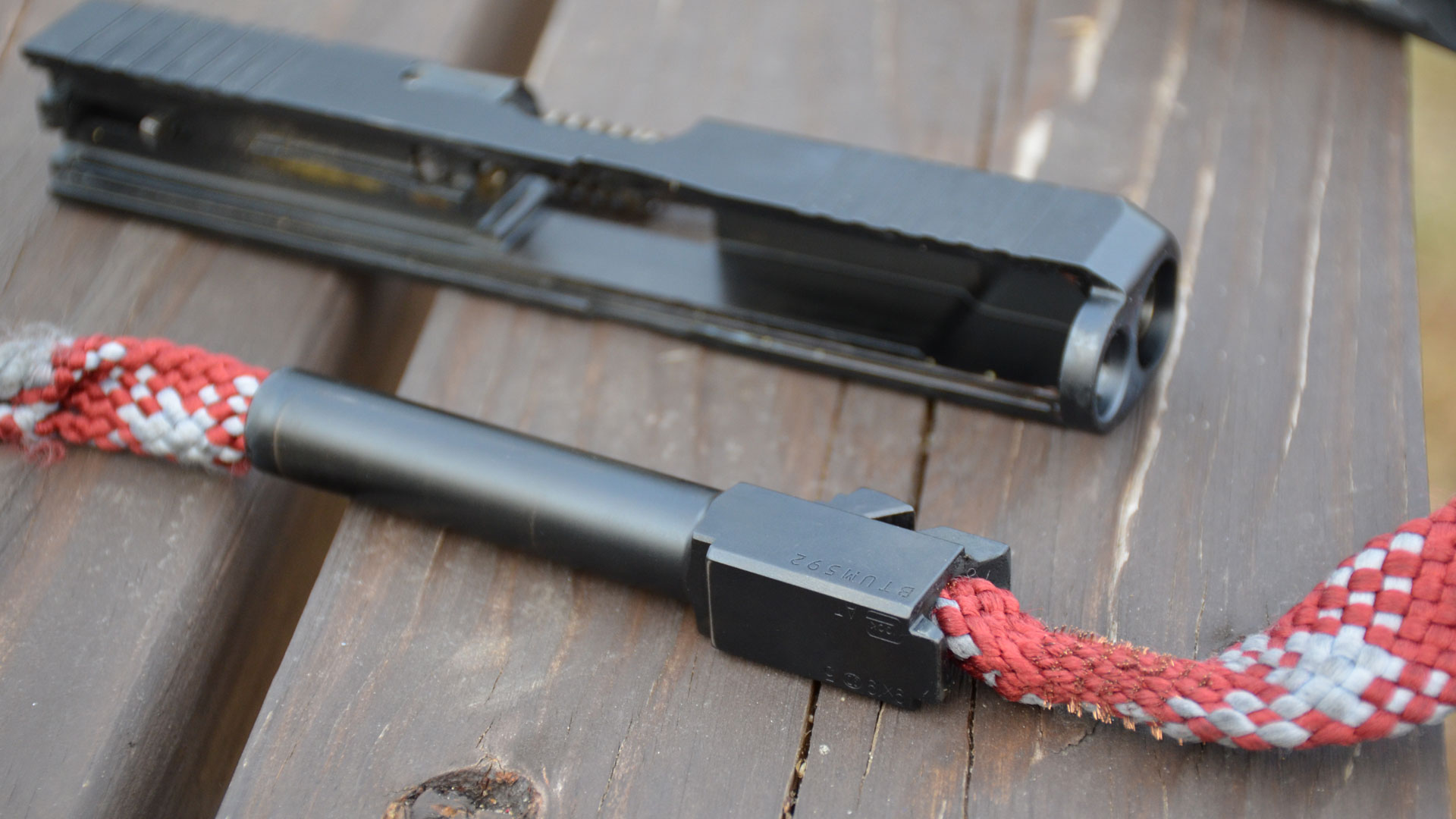
Nope rope in bore of Glock: A pull-through bore cleaner saves time and combines a brush and patch.
Step 2
Semi-Auto: Remove the slide
To clean your semi-auto pistol, remove the slide so that you can clean both the barrel and the slide. It’s always a good idea to follow the directions on your pistol manufacturer’s website, or find a video with step-by-step directions on disassembling your exact model of firearm. You can usually search video channels for “how to” videos related to your pistol. For example, Smith and Wesson has a simple video on its YouTube channel for the M&P EZ.
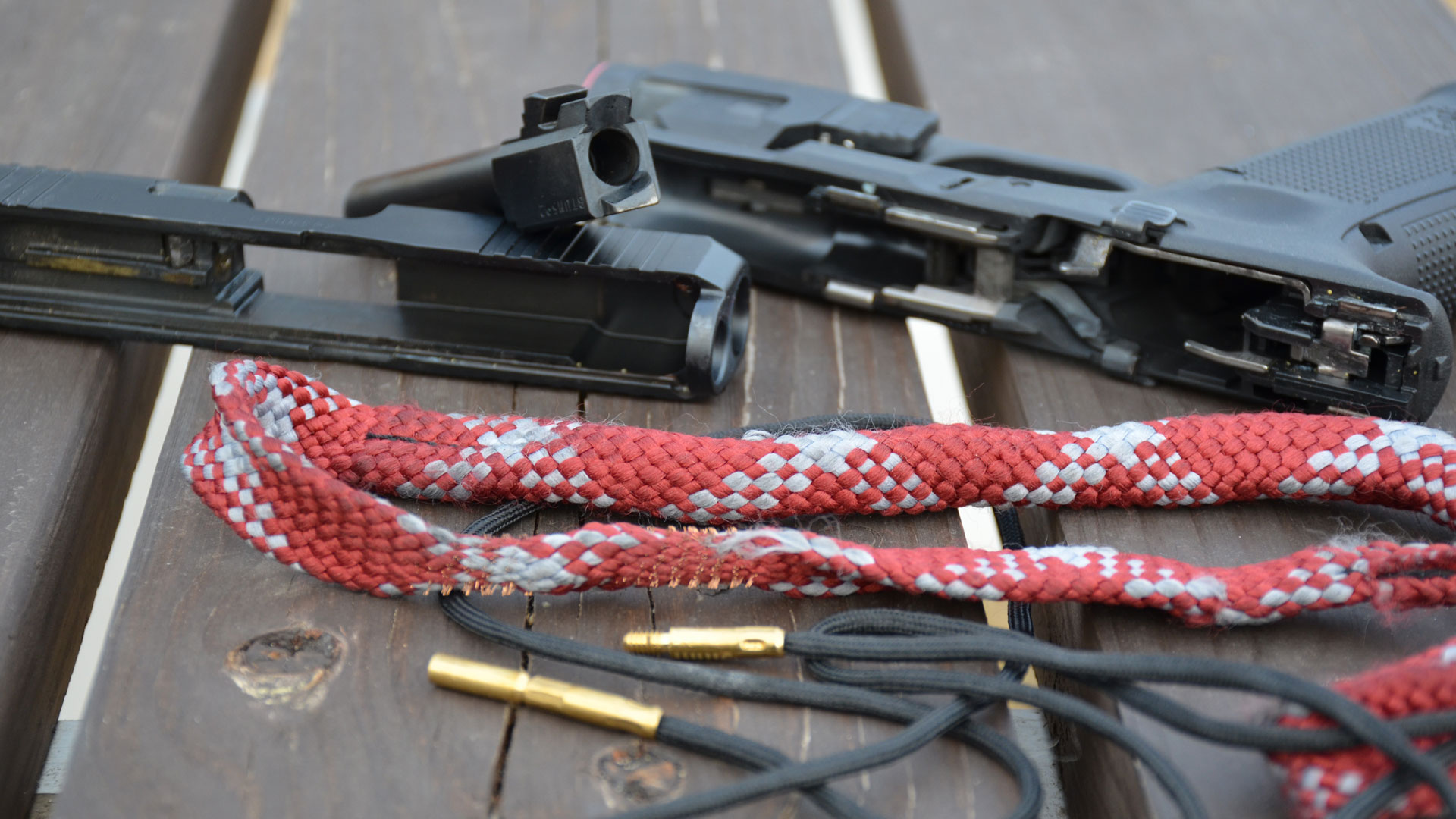
Step 3
Semi-automatic: Clean the main parts of the slide and frame, as well as the barrel.
Clean the barrel, slide and frame. This is easily accomplished by wiping off the oil, grease and carbon. Use a pipe cleaner or swabs to get into the tight spaces. For the barrel, using a pull-through style bore brush is the simplest method. A few passes with one of these types of cleaners will do the job.
I always pay attention to the feed ramp on my barrel to make sure any carbon has been cleaned off it and the hood of the barrel.
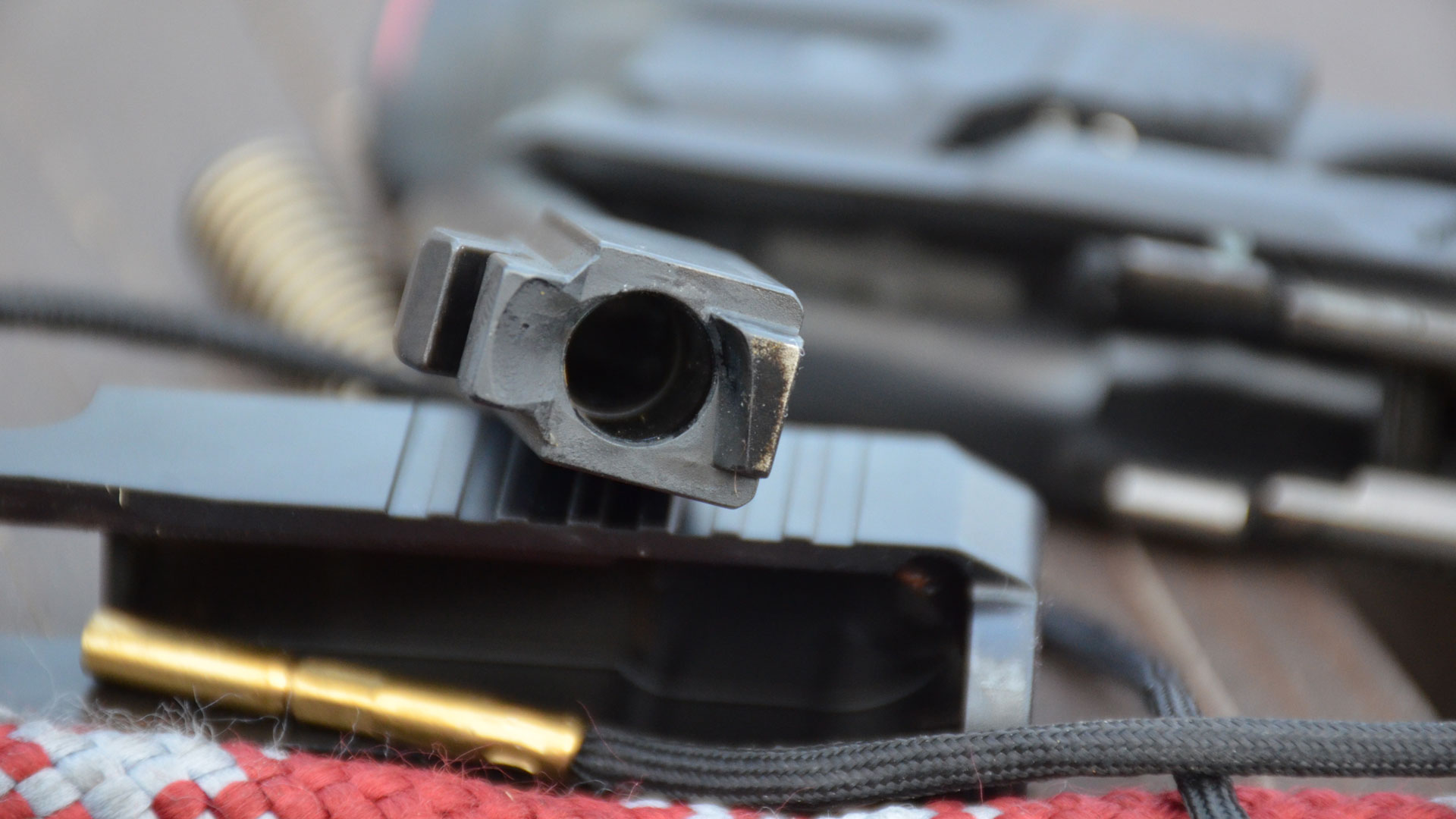
The part of your barrel that directs the rounds up and into the chamber is called the feed ramp. Keep it free from carbon that can cause rounds to “stick” or slow down in their movement from the magazine into the chamber.
Step 4
Clean the small parts.
Inspect and clean the extractor. Look at the ejector and firing pin hole. You don’t have to remove the firing pin or extractor for a simple cleaning.
For most semi-automatic pistols, it will take somewhere upward of 1,500 to 3,000 rounds to warrant pulling the firing pin and extractor out to clean them, as well as the channels into which they fit.
When your handgun has had most of the oil and carbon wiped off, it’s a good time to look closely at the small parts.
It can be helpful to seek out a few videos or articles covering your exact model of firearm and common issues or tips on cleaning them. Not only will you learn terminology and parts of your firearm, but you usually will learn what to look for in the gun you own.
Look closely for carbon under the hook of your extractor (often you can clean this with a pipe cleaner or dental pick).
Inspect the sights, grip screws, mag well, and any other parts of the gun that have screws or set screws holding them in place.
Step 5
Oil and reassemble.
Add only enough oil to lightly coat the contact surfaces of the gun. Again, consult your manufacturer’s directions for your particular handgun. Remember that oil attracts dirt and carbon. You want your firearm to have enough oil that it can function properly, but not so much that it attracts carbon from firing, dust from the range or lint in your clothing.
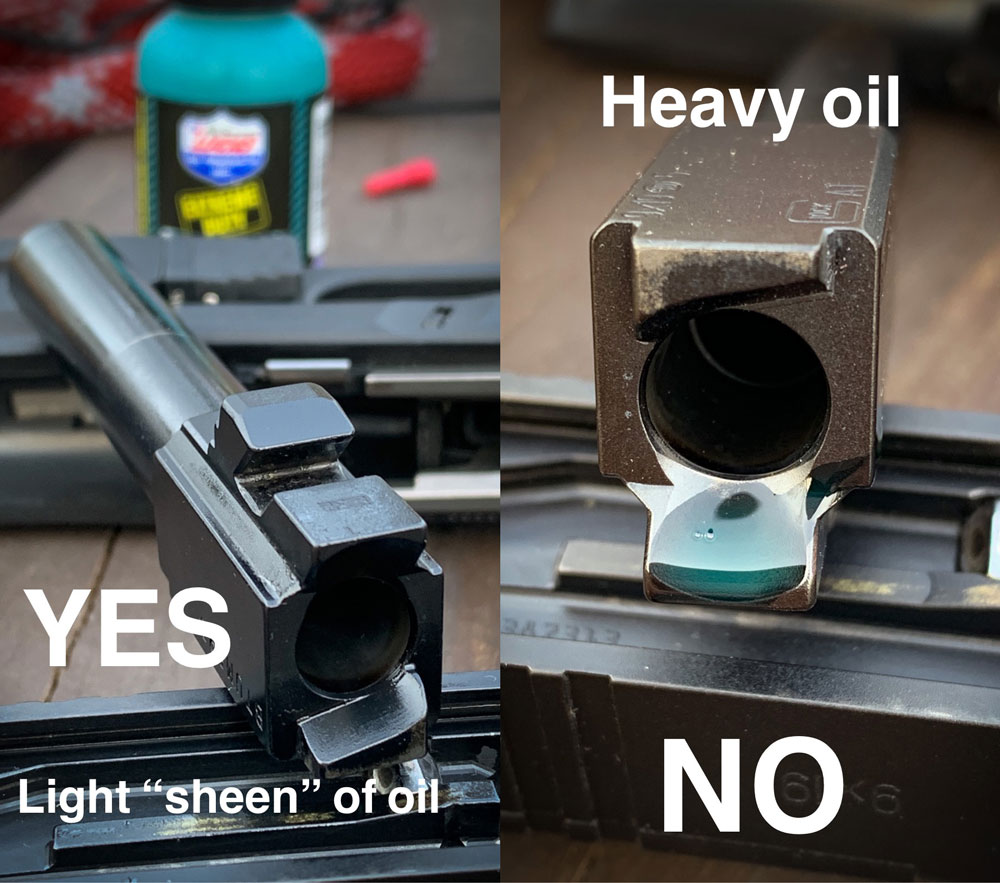
Guns do not need to be dripping with oil. A light sheen of a quality oil is enough to do the job. Understanding how your particular ammo, gun, and the use/conditions you use it in will help you learn when to apply more (or less).
Once you’ve reassembled the gun, wipe excess oil off the slide where you need to grip it to operate the slide, as well as the grip.
At this point I pay attention to cleaning my fiber optic, often using a cotton swab with glass cleaner. Avoid solvents on fiber-optic sights, because solvents can etch them, which can impact how they transmit light.
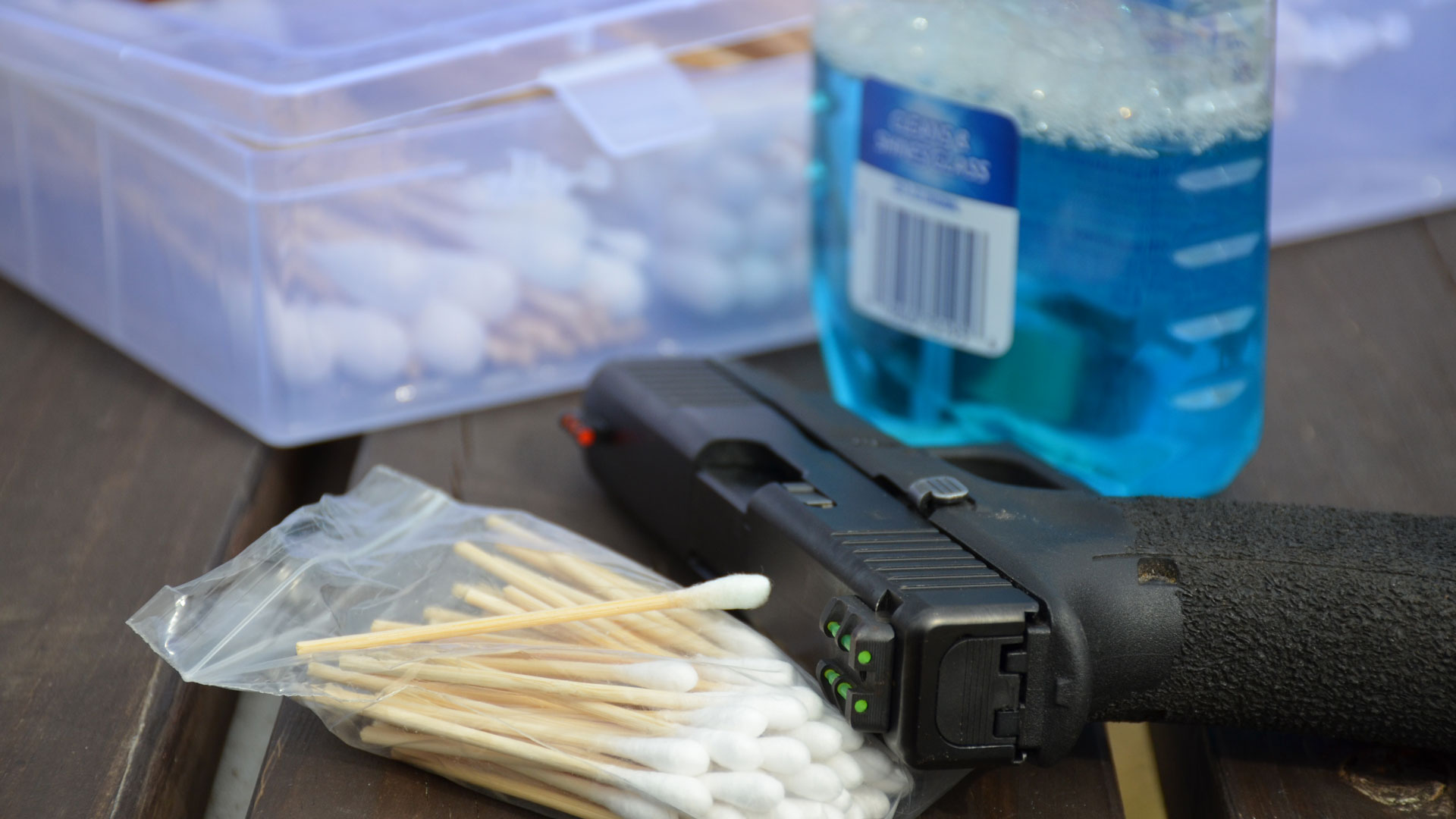
Be careful to keep solvents off of fiber optic sights. Use window cleaner or something less caustic.
Also, clean your rear sight. Check to see that it’s secure and if it’s adjustable. This is a good time to look at the screws and pins and make sure nothing has worked its way loose. If you have an optic on your pistol, check its mounting screws and battery life.
Step 6
Function Fire
If this is the first time that you have ever taken apart and cleaned your gun, take it out and shoot it. Not just to have a chance to function fire, but to enjoy your firearms. Even the ones that are tools for safety deserve some time on the range!
Don’t forget to go over your magazines too. At least a few times a year, devote a little time to cleaning and inspection of your magazines.
A note on revolvers: If you have a revolver, the steps are basically the same; you just do not have a slide to remove. You can clean your barrel the same way. Clean the chambers/cylinder with a cleaning swab. Inspect the small parts. Re-oil. Wipe the gun down and function fire. Since you have fewer steps with a revolver, you will save some time. This just means more time for practicing other skills.
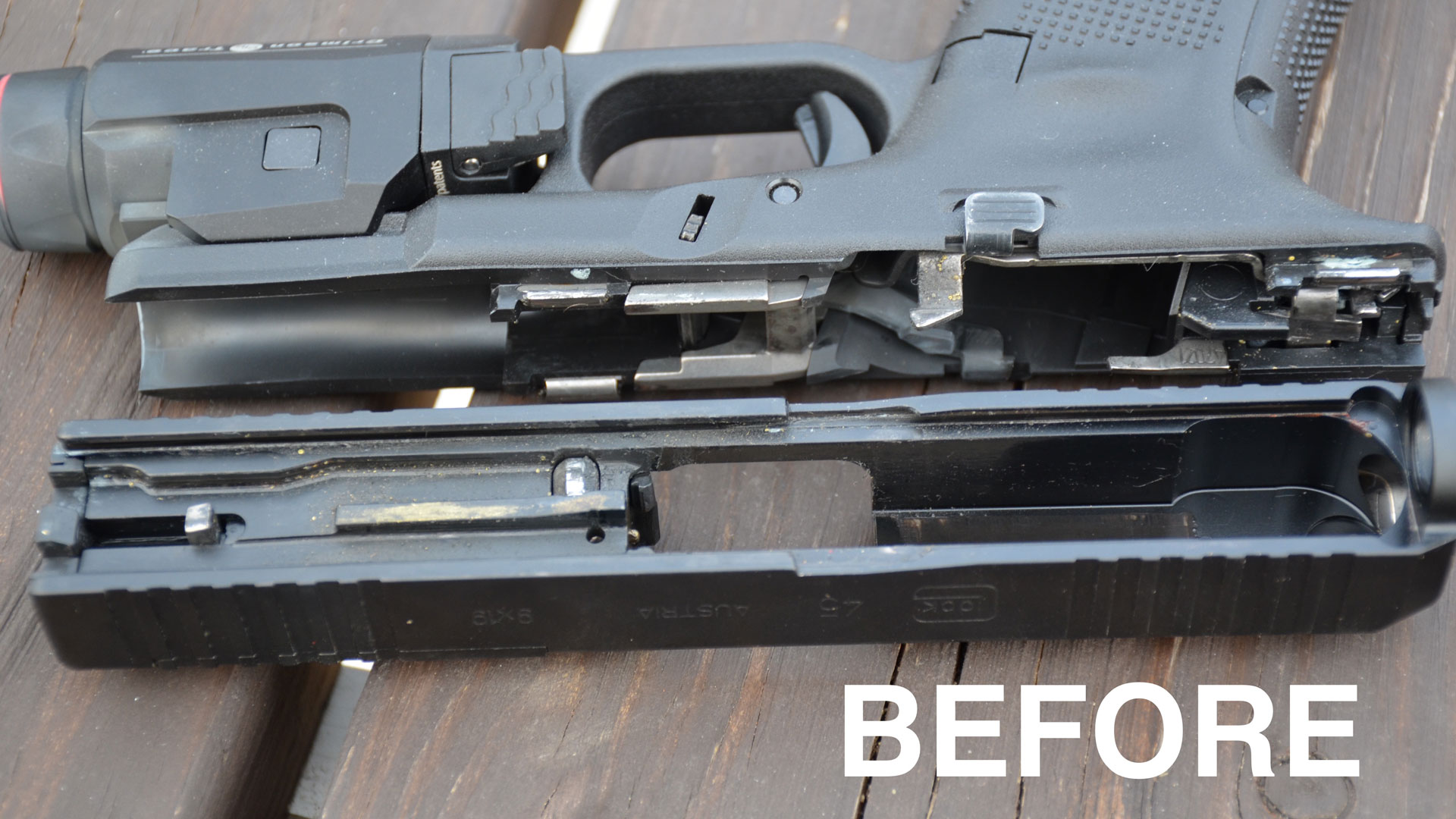
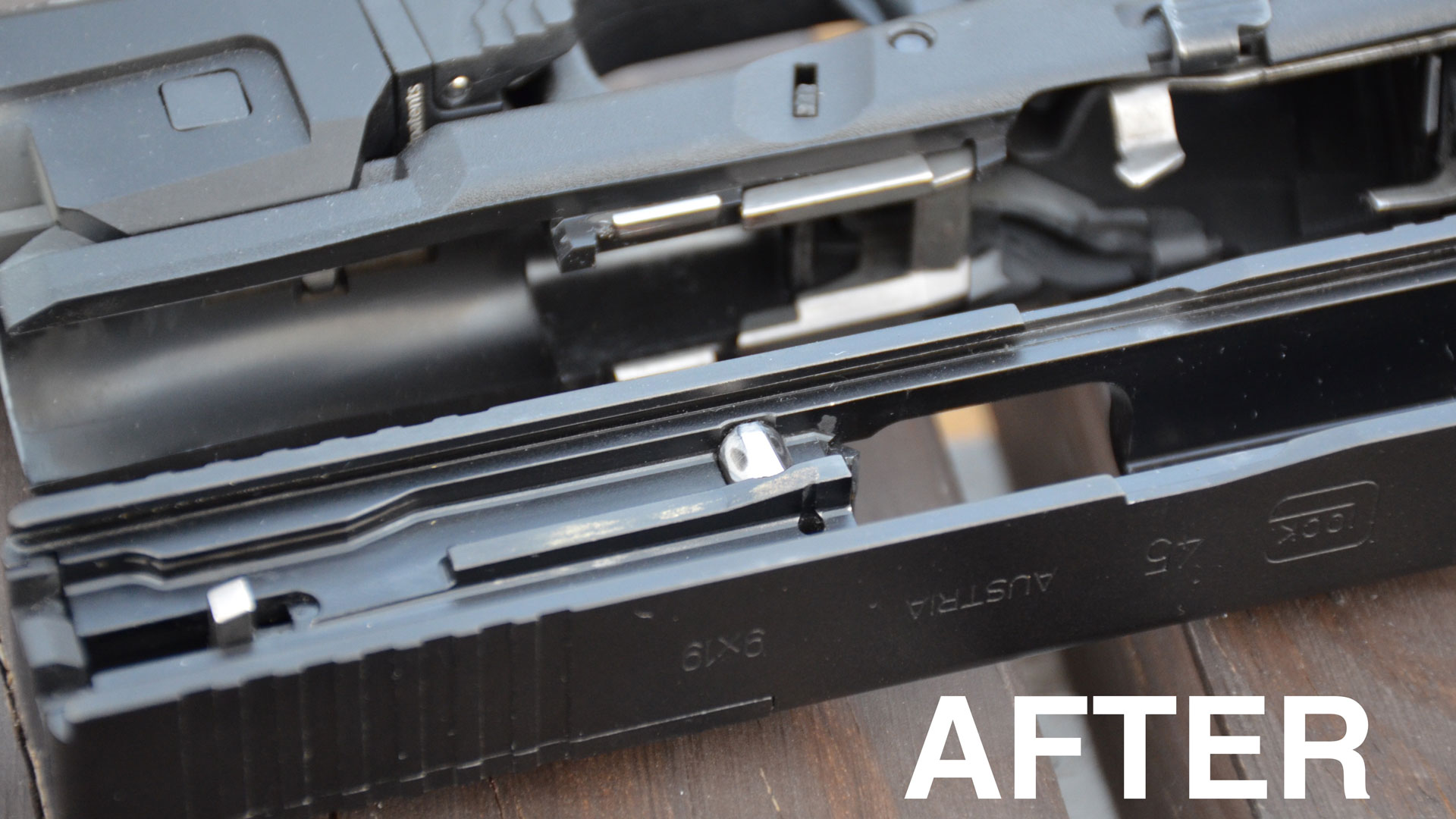
Your extractor plays a major role in your firearms function and should always get attention when you clean a gun.
















